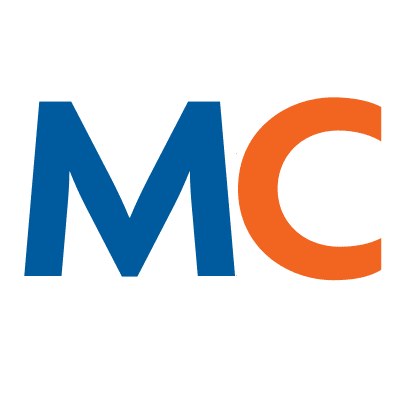- Solutions
- Solutions
- Home Health
- Hospice
- Life Plan Community
- Palliative Care
- Private Duty
- Senior Living
- Skilled Nursing
- Skilled Nursing
- Skilled Nursing Software
- Advanced Insights
- Customer relationship management
- Data and analytics
- Financial & operations management
- Marketing
- Nutrition management
- Referral management
- Regulatory compliance
- Retail management
- Resident engagement
- Revenue cycle management
- Skilled nursing interoperability
- Partners
- Blogs
- Resources
- About
- User Conference

Ending the PHE: What it means for SNFs
On July 15, the Biden administration extended the Covid-19 Public Health Emergency (PHE) for another three months. US Department of Health and Human Services (HHS) Secretary Xavier Becerra officially renewed the declaration, extending the PHE end date to October 13, 2022. We know many of you have questions about the PHE, the implications of the extension, and when the PHE may actually end.
Q: As a reminder, what is the purpose of the PHE?
A: The existence of the PHE allows for regulatory flexibilities for patients, providers, and payors to receive reimbursement for telehealth services; provides additional federal matching dollars for Medicaid; ensures continuous coverage for Medicaid patients; and continues coverage of COVID-19 testing and vaccines.
Q: So, when will the PHE end?
A: Though the PHE has been extended through October, there is also a 60-day deadline to notify states if the HHS does not plan to extend the PHE further. A lot will depend on the Covid variants, numbers, hospital admissions, and more this fall and winter. If the federal government decides to end the PHE in January 2023, this would be followed by a 151-day extension provided for in the March Omnibus package. This would also extend the flexibilities, particularly those with respect to telehealth, through mid-March 2023, at a minimum.
Q: What do waivers and the PHE have to do with each other?
A: In 2020, the Centers for Medicare and Medicaid Services (CMS) issued 130 blanket waivers in the first few months of the COVID-19 pandemic. These waivers were intended to be used to assist a provider through PHE challenges. They were never intended to be a free ticket for agency non-compliance. With the CMS inferring that the PHE will be winding down, preparations need to commence as per pre-PHE policy. For example, if a waiver was granted, it will end and full compliance will need to be reinstated.
Q: Will any new waivers be added, or extended?
A: It’s important to remember that CMS does not have the authority outside of changed legislation to create new or extend beyond the PHE once the PHE officially ends. As far as we know at this stage, the CMS is not looking to add any new waivers – nor are they planning to extend any.
Q: What does the PHE end date mean for Long Term Care?
A: Several Medicare payment and coverage waivers were put in place during the PHE to support skilled nursing facilities (SNFs)
including:
- Professional licensing and certification requirements
- Amending scopes of practice with respect to certified nursing assistants, home health aides, nursing home administrators
- States may not drop anyone off Medicaid rolls for the duration of the PHE. States are readying to examine thousands of Medicaid enrollees to redetermine whether they are eligible
- 3-day prior hospitalization requirement for SNF
Several waivers have already been sunset in May, including Physician Visits and Physician Delegation of tasks in SNFs, as well as staffing and licenses requirements. You can find the full CMS memo on the sunsetting of various waivers at this link.
Q: What should facilities and providers do now to prepare for the PHE end date?
A: Facilities and providers should start making plans for the end of the PHE and the blanket waivers that came along with it. Some of the CMS blanket telehealth waivers, and perhaps other CMS blanket waivers, will continue past the end of the PHE or become permanent. Facilities and providers should continue to monitor the PHE and be alert to the termination or scaling back of state COVID-19 policies as well.
Q: How will changes affect IT developers?
A: Long-Term and Post-Acute Care (LTPAC) Health IT developers set aside any planned development timelines to respond to the urgent needs and systematic changes that combatting COVID-19 demanded. They worked hard to ensure appropriate edits or other code changes were incorporated into software programs to reflect the policy changes prescribed in waivers impacting their LTPAC provider clients.
CMS waivers and changes implemented by other agencies have had a direct impact on the programming for the health IT systems and solutions that providers rely on in caring for their patients, paying their staff, public reporting on the pandemic, and seeking reimbursement for their collective services.
Unwinding this complex array of changes – whenever the COVID-19 Public Health Emergency (PHE) ends – is likely to require similar efforts and resources to undo COVID-19-related programming and other health IT systems’ changes.
Q: Why is it important to prepare in advance for the PHE end date?
A: Enforcement of regulations will continue to ramp up and surveyors will become more stringent in their compliance expectations of providers and facilities. Facilities should look back, audit and evaluate how they have utilized regulatory waivers and relaxed enforcement policies throughout the pandemic. It’s also a good idea to raise awareness around the potential liability of a regulatory violation by unwittingly relying on a policy that is no longer valid.
As always, and for your own protection, be well aware of changing regulations and stay well documented before, during and after any legislative modifications.
MatrixCare continually innovates so our customers can do good and do well. Ask us how we can partner with you during this challenging environment of the PHE, regulatory changes, and more.
Request a demo today for a closer look at MatrixCare.
See what MatrixCare can do for you
Jenny Lee
Jenny Lee is a health care regulatory expert with more than 15 years of experience. After working for the Brookings Institution and various specialty medical organizations, including ASCRS and the National PACE Association, she joined MatrixCare as its Regulatory Compliance Manager, to ensure that all its technology solutions remain compliant in the ever-changing health care market. She is excited by MatrixCare’s continuous opportunities for innovation to support patients and providers in the long-term care space.
Related Posts



See MatrixCare in action
Start by having a call with one of our experts to see our platform in action.
MatrixCare offers industry-leading software solutions. Thousands of facility-based and home-based care organizations trust us to help them improve efficiency and provide exceptional care.
© 2026 MatrixCare is a registered trademark of MatrixCare. All rights reserved.





